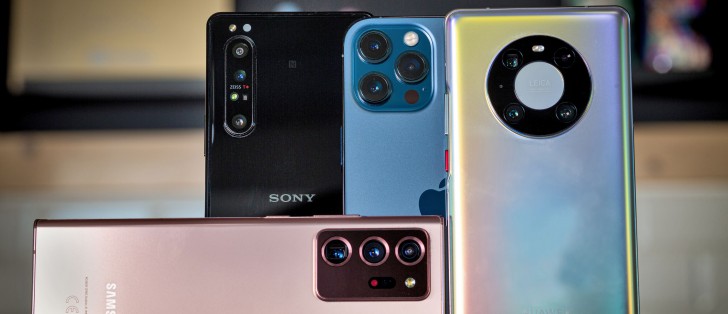Camera test: iPhone 12 Pro Max vs. Mate 40 Pro vs. Xperia 1 II vs. Galaxy Note20 Ultra

Daylight photo quality, ultra wide angle camera
Moving on to the ultra wides, the phones' approaches diverge, which becomes readily apparent in the coverage. The Galaxy and the iPhone have the widest field of view, and it's as good as identical between the two even though the iPhone EXIF info reports 14mm and the Galaxy's says 13mm. The Xperia is a little tighter but still very wide at 16mm. Meanwhile, the Mate's 18mm equivalent means it offers the narrowest field of view, plus its camera is in a different aspect (3:2 vs. 4:3 on the others), so it will further limit what you can capture vertically.




Daylight, ultra wide camera: Galaxy Note20 Ultra • iPhone 12 Pro Max • Mate 40 Pro • Xperia 1 II




Daylight, ultra wide camera: Galaxy Note20 Ultra • iPhone 12 Pro Max • Mate 40 Pro • Xperia 1 II
What the Mate 40 Pro lacks in coverage, however, it easily makes up for fine detail. None of these other three can hold a candle to its resolving power, a combination of the highest-res sensor and its high-quality optics.
Between the Galaxy, the iPhone, and the Xperia, it's really a toss-up for detail, though perhaps the Note's ultra-wide does lose by a narrow margin when it comes to edge definition if you insist on looking carefully and for long. On the flip side, it's about this much superior in noise reduction - hardly any noise in its photos, minor speckling in the iPhone and Xperia shots.




Daylight, ultra wide camera: Galaxy Note20 Ultra • iPhone 12 Pro Max • Mate 40 Pro • Xperia 1 II




Daylight, ultra wide camera: Galaxy Note20 Ultra • iPhone 12 Pro Max • Mate 40 Pro • Xperia 1 II
The iPhone and the Galaxy maintain their parity beyond coverage too. Color reproduction and dynamic range are so similar most of the time that we'd be hard-pressed to tell them apart in a blind test. The Xperia is easier to spot - it tends to expose darker and has a more limited dynamic range.




Daylight, ultra wide camera: Galaxy Note20 Ultra • iPhone 12 Pro Max • Mate 40 Pro • Xperia 1 II




Daylight, ultra wide camera: Galaxy Note20 Ultra • iPhone 12 Pro Max • Mate 40 Pro • Xperia 1 II




Daylight, ultra wide camera: Galaxy Note20 Ultra • iPhone 12 Pro Max • Mate 40 Pro • Xperia 1 II
Reader comments
- Hossien
- 28 Apr 2023
- cSx
No phone in the world can take pictures as well as a camera, a phone is something that is always available. The camera is not always available, but the phone is everywhere. If a random scene happens, the camera is not available to you, you have to ...
- Anonymous
- 03 May 2022
- fD9
imma tell you what, i know a thing or two about taking photos and i would take a proper camera over this
- Anonymous
- 06 Mar 2022
- Y7I
That's why I have a Sony RX100 VI for trips and outings when I want better pictures than with my phone. I can zoom in optically a lot and it has a nice picture quality. No need for a DSLR unless you are a paid photographer or need it for work or...